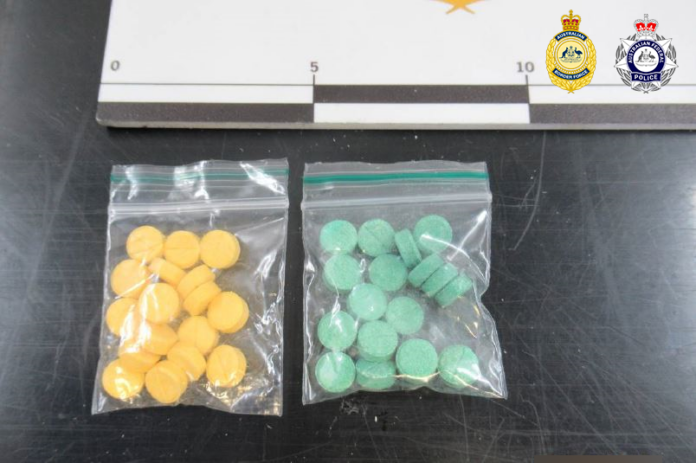Australia should prepare now for a potential influx of synthetic opioids into the illicit drug market, an expert has told Australian Pharmacist, as overdoses increase internationally.
NSW Health issued a warning last month after three people presented to hospitals after taking as little as half a tablet of what they thought was MDMA. Testing on one tablet found it contained a nitazene (a synthetic opioid), which can be as strong, or stronger, than fentanyl, and no MDMA.
While Australia is yet to experience an ‘opioid overdose epidemic’ like that which has been well documented in the United States, incidents like this highlight the need to be prepared for the possibility, Professor Suzanne Nielsen MPS, Deputy Director of the Monash Addiction Research Centre in Melbourne, told AP.
‘Novel synthetic opioids are one of the biggest threats to drug-related harm that we’re aware of. Not only having them emerge in the opioid market, but contamination in other supplies, such as the nitazenes detected in drugs at a festival. That’s a very dangerous situation,’ she said.
According to the Centers for Disease Control and Prevention (CDC), the number of people dying from synthetic opioids in the US has grown rapidly in the past decade. In 2011, fewer than 3000 deaths were linked to a synthetic opioid. In 2021, this number was more than 70,000.
In Australia, overdose deaths have exceeded the road toll since 2014, and deaths that involve synthetic opioids like fentanyl have been increasing. There were 185 unintentional deaths linked to synthetic opioids in 2019, up from 84 in 2014.
The rise of synthetic opioids
There are a number of factors that could see an increase in synthetic opioids in Australia’s illicit drug market, Prof Nielsen said, including a reduction in heroin supply.
‘It’s very difficult to predict if and when these substances might become more dominant in the Australian market. But if we consider what we’ve seen in other countries, and also market forces, for example the dramatic reduction in opium poppy farming reported in other parts of the world, it certainly wouldn’t be surprising if we saw major shifts in the Australian opiate market in coming years.’
In the US, it was a reduction in the prescription of legal opioids that helped to create a gap in the illicit drug market, which fentanyl filled.

‘The government clamped down on access to prescription opioids and large numbers of people moved from medical access to an illicit drug market,’ Prof Nielsen said. ‘That coincided with large increases in opioid-related harm.’
This is a lesson Australia could learn, showing the need to be ‘really careful’ when restricting access to opioids for chronic pain.
‘We need to make sure we’re not losing people from the medical system and that we’re able to support people, as opposed to having them shift to accessing drugs online, or accessing illicit opioids,’ Prof Nielsen said.
‘Pharmacists have an enormous role to play when it comes to managing chronic pain and opioids. For patients who rely on high-dose opioids, if we are looking at deprescribing or tapering, that needs to be done very carefully, and in a patient-centred way, so we don’t end up with patients feeling like they’re being cut off their opioids without any involvement in that decision.’
Pharmacists on the frontline
Pharmacists also have a vital role to play in the prevention of harm from synthetic opioids as providers of opioid dependence treatment programs, Prof Nielsen said.
‘We know from other countries that the effectiveness of methadone and buprenorphine to prevent overdose mortality becomes even more profound in the context of these much more toxic drug markets,’ she said.
‘So being able to scale up and offer these programs to more people who might seek them is a critical thing Australian pharmacy could do.’
Providing take-home naloxone will also be vital, given how quickly synthetic opioids can act.
‘Typically with a heroin overdose, there’s often a 25 or 30 minute window of time when someone is entering an overdose state and you can call an ambulance or administer naloxone,’ Prof Nielsen said. ‘But with some novel synthetic opioids, particularly fentanyl, that window to respond is much shorter, only a couple of minutes.
‘That puts a much sharper focus on the importance of pharmacy naloxone programs. We need to make sure that people have it on hand if we start to see these very potent, fast-acting opioids emerge.’
While there are no certainties that Australia will experience a synthetic opioid boom, Prof Nielsen said it is important to be proactive in order to avoid a public health crisis.
‘Of course, it might not happen, but it would be prudent to prepare. It’s important that pharmacists remain aware of what’s going on and are able to respond.’
Further information
Take-home naloxone: How to ensure you save a life
How to save a life with naloxone (CPD)
Australian Pharmaceutical Formulary non-prescription medicine guideline, Naloxone for Opioid Overdose



 John Jones MPS, pharmacist immuniser and owner of My Community Pharmacy Shortland in Newcastle, NSW[/caption]
John Jones MPS, pharmacist immuniser and owner of My Community Pharmacy Shortland in Newcastle, NSW[/caption]


 Debbie Rigby FPS explaining how to correctly use different inhaler devices[/caption]
Debbie Rigby FPS explaining how to correctly use different inhaler devices[/caption]




 Professor Sepehr Shakib[/caption]
Professor Sepehr Shakib[/caption]

 Lee McLennan MPS[/caption]
Lee McLennan MPS[/caption]
 Dr Natalie Soulsby FPS, Adv Prac Pharm[/caption]
Dr Natalie Soulsby FPS, Adv Prac Pharm[/caption]
 Joanne Gross MPS[/caption]
Joanne Gross MPS[/caption]





